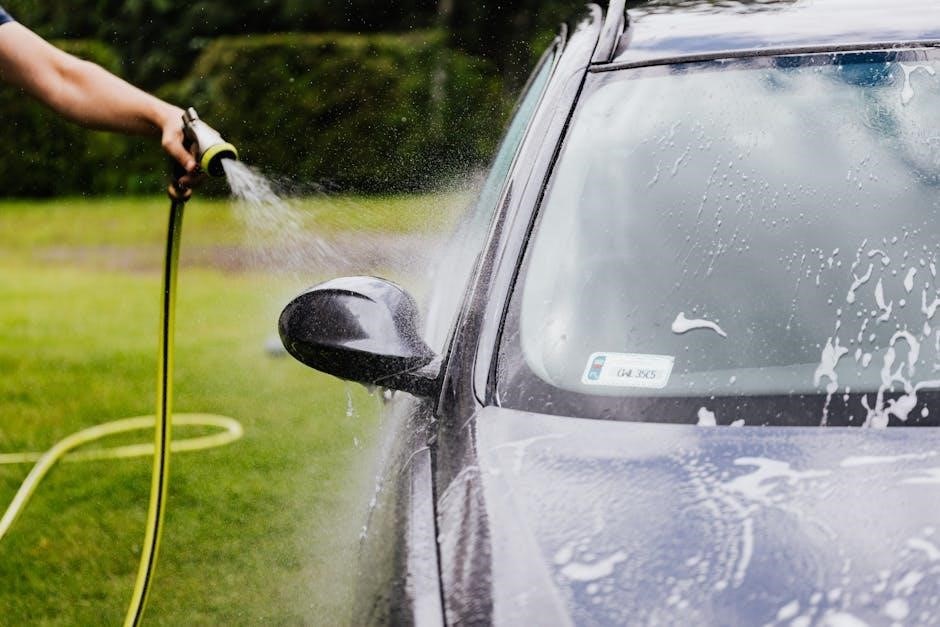
why do cars stall manual

Understanding Why Manual Cars Stall

Manual cars stall due to a combination of mechanical and driver-related factors. Common causes include improper clutch and accelerator coordination, worn clutch components, insufficient fuel supply, faulty idle air control valves, clogged air filters, or damaged spark plugs. Additionally, issues like incorrect throttle position sensor calibration, low transmission fluid levels, or malfunctioning oxygen sensors can contribute. Driver error, such as poor shifting techniques or aggressive acceleration, often plays a significant role. Regular maintenance and practicing smooth driving habits can help minimize stalling.
Manual transmission cars are known for their precision and control, but they can stall if not handled properly. Stalling occurs when the engine suddenly stops running, often due to improper coordination between the clutch and accelerator pedals. This is a common issue, especially for new drivers, but it can also happen to experienced drivers under certain conditions. The clutch pedal disconnects the engine from the transmission, allowing gear shifts, but if released too quickly or without sufficient throttle input, the engine may stall. Other factors, such as improper throttle control, low idle speed, or mechanical issues, can also contribute. While stalling can be frustrating, it is usually caused by specific, identifiable factors. Understanding these causes is key to preventing stalling and mastering the art of driving a manual car. By addressing these issues, drivers can improve their skills and enjoy the full benefits of manual transmission driving; Regular practice and mechanical maintenance are essential to minimizing stalling incidents.
Clutch and Accelerator Coordination
Proper coordination between the clutch and accelerator pedals is crucial to prevent stalling in manual transmission cars. When starting from a standstill, the driver must press the clutch pedal fully and shift into first gear. Slowly releasing the clutch while pressing the accelerator ensures a smooth start. If the clutch is released too quickly or the accelerator isn’t pressed firmly, the engine may stall. This is especially common in uphill starts or when carrying heavy loads. Additionally, during gear shifts, the driver must “feel” the clutch engagement point, where resistance is felt as the engine begins to pull. Misjudging this point can lead to sudden Stops. Improper coordination can also occur when shifting into higher gears too quickly without sufficient acceleration. Drivers must practice the balance between clutch release and accelerator input to maintain smooth operation. Over time, this coordination becomes instinctive, reducing the likelihood of stalling. Regular practice and attention to pedal feedback are essential for mastering this skill.

Clutch Wear and Maintenance

Clutch wear is a common cause of stalling in manual transmission cars. Over time, the clutch friction material can become worn down, reducing its ability to engage smoothly with the flywheel; A worn clutch may cause the engine to stall, especially when accelerating from a standstill or shifting gears. Signs of clutch wear include a spongy pedal feel, difficulty shifting into gear, or a noticeable delay in acceleration. Regular maintenance is essential to prevent premature wear. This includes checking the clutch pedal’s free play and ensuring the hydraulic or cable system is properly bled. Ignoring these issues can lead to complete clutch failure, resulting in costly repairs. Additionally, driving habits, such as “riding the clutch” (keeping the pedal partially pressed), can accelerate wear. Replacing the clutch at the first sign of wear can help avoid frequent stalling and maintain smooth vehicle operation. Proper maintenance and mindful driving habits are key to extending the life of the clutch and minimizing stalling issues.

Fuel-Related Issues
Fuel-related problems can significantly contribute to manual cars stalling. Low fuel levels, for instance, can cause air to enter the fuel line, disrupting the consistent flow of fuel to the engine. This interruption often leads to stalling, especially when accelerating or climbing inclines. Additionally, a clogged fuel filter can restrict fuel flow, starving the engine of the necessary fuel to maintain operation. Dirty or faulty fuel injectors can also spray fuel inefficiently, leading to poor engine performance and stalling. Using the wrong type of fuel, such as putting diesel in a gasoline engine, can cause severe damage and result in immediate stalling. Drivers should ensure their fuel tank is never below a quarter full, use the correct fuel type, and regularly maintain the fuel system to prevent these issues. Addressing fuel-related problems promptly can help eliminate stalling and ensure smooth engine operation. Regular inspections of the fuel filter and injectors are crucial for maintaining optimal performance.
Idle Air Control Valve Function
The idle air control valve (IACV) plays a crucial role in maintaining a smooth engine idle, especially in manual cars. Its primary function is to regulate the airflow entering the engine when the throttle is closed, ensuring a steady idle speed. If the IACV becomes dirty or faulty, it can disrupt the airflow, causing the engine to stall, particularly when coming to a stop or shifting gears. A malfunctioning IACV may also lead to inconsistent idle speeds, making it difficult to control the car during low-speed maneuvers. Cleaning or replacing the IACV can often resolve these issues. Additionally, ensuring proper IACV function is vital for maintaining overall engine performance and preventing stalling. Regular maintenance, such as cleaning the valve or checking for vacuum leaks, can help keep the IACV operating correctly. A faulty IACV should be addressed promptly to avoid further complications and ensure smooth driving. Proper function of this component is essential for maintaining consistent engine operation.
Air Filter Maintenance
A dirty or clogged air filter can significantly contribute to a manual car stalling. The air filter is responsible for ensuring clean air enters the engine, which is crucial for proper combustion. When the air filter becomes obstructed, it restricts airflow, disrupting the air-fuel mixture and potentially causing the engine to stall, especially when decelerating or shifting gears. A restricted air filter can lead to a “lean” fuel mixture, where there is too much air relative to fuel, causing misfires and stalling. Drivers may notice symptoms such as rough idling, reduced performance, or hesitation during acceleration. Regular maintenance, such as inspecting and cleaning or replacing the air filter every 15,000 to 30,000 miles, can prevent these issues. A clean air filter ensures proper engine operation, maintaining smooth idle and consistent power delivery, which are essential for manual transmission vehicles. Neglecting air filter maintenance can exacerbate stalling problems, especially in older or high-mileage cars. Proper airflow is vital for reliable engine performance.

Spark Plug Condition
The condition of spark plugs plays a significant role in the proper functioning of a manual car’s engine. Spark plugs are responsible for igniting the fuel-air mixture inside the combustion chamber, and their deterioration can lead to engine misfires and stalling. Over time, spark plugs can become worn out, fouled by oil or carbon deposits, or develop gaps that prevent proper ignition. This can result in inconsistent engine operation, particularly during acceleration or idling. If the spark plugs are not firing correctly, the engine may struggle to maintain power, leading to stalls, especially when shifting gears in a manual transmission vehicle. Regular inspection and replacement of spark plugs, typically every 30,000 to 100,000 miles depending on the type, are essential to prevent such issues. Symptoms of faulty spark plugs include rough idling, poor acceleration, and decreased fuel efficiency. Ensuring clean, functioning spark plugs is crucial for maintaining smooth engine performance and avoiding unnecessary stalling.
Throttle Position Sensor Calibration
The throttle position sensor (TPS) is a critical component that monitors the throttle valve’s opening angle and relays this information to the engine control module (ECM). Proper TPS calibration ensures the ECM delivers the correct fuel-to-air ratio, maintaining smooth engine operation. If the TPS is miscaledibrated, the ECM may miscalculate fuel injection, leading to erratic engine behavior, including stalling, especially during acceleration or gear shifts in manual cars. Symptoms of TPS calibration issues include rough idling, hesitation when accelerating, or sudden jerks while driving. Over time, the TPS can lose its accuracy due to wear, dirt, or electrical interference, requiring recalibration. In some cases, resetting the TPS or performing a manual calibration may resolve the issue. However, if the problem persists, it may indicate a faulty sensor needing replacement. Ensuring the TPS is correctly calibrated is essential for preventing stalls and maintaining optimal engine performance. Regular checks and maintenance can help identify and address TPS-related issues early.
Transmission Fluid Level
The transmission fluid level plays a crucial role in the smooth operation of a manual car. Low transmission fluid can cause the gears to engage improperly, leading to stalling, particularly when shifting into first gear or reverse. Transmission fluid lubricates the gears and hydraulic components, ensuring smooth gear engagement. If the fluid level drops due to leaks, infrequent fluid changes, or overfilling, the hydraulic pressure required to engage gears may be insufficient, causing the car to stall. Symptoms of low transmission fluid include difficulty shifting gears, grinding noises, or a delay in acceleration. Checking the transmission fluid level regularly and maintaining it at the recommended level is essential to prevent stalling. Additionally, ensuring the fluid is clean and free from contamination can help maintain optimal transmission performance. Regular fluid changes, as specified in the vehicle’s maintenance schedule, are vital to avoid transmission-related issues. Neglecting transmission fluid maintenance can lead to costly repairs and frequent stalling problems.
Oxygen Sensor and Mass Airflow Sensor
The oxygen sensor and mass airflow sensor are critical components that influence a manual car’s performance and can contribute to stalling if they malfunction. The oxygen sensor monitors the exhaust gases, providing data to the engine control unit (ECU) to ensure proper air-fuel mixture. A faulty oxygen sensor can lead to an incorrect air-fuel ratio, causing the engine to run lean (more air, less fuel) or rich (more fuel, less air). This imbalance can cause the engine to misfire or stall, especially when decelerating or shifting gears. Similarly, the mass airflow sensor measures the amount of air entering the engine. If it fails or becomes dirty, the ECU cannot accurately calculate fuel injection, leading to poor engine performance and potential stalling. Symptoms of a faulty mass airflow sensor include rough idling, hesitation during acceleration, and stalling. Regular cleaning or replacement of these sensors, as needed, ensures accurate engine performance and helps prevent stalling issues in manual cars. Maintaining these sensors is essential for optimal engine functionality and smooth driving.
Driving Habits and Techniques

Driving habits and techniques play a significant role in why manual cars stall. One common issue is improper use of the clutch, such as “riding the clutch,” where the driver keeps the clutch partially engaged. This can cause the engine to struggle, especially when accelerating from a stop or on an incline. Additionally, sudden or aggressive acceleration without proper clutch release can lead to stalling. Many drivers, especially those new to manual transmissions, may not coordinate the clutch and accelerator pedals smoothly, causing the engine to lose power and stall. Other habits, such as shifting gears too quickly or not using the correct gear for the speed, can also result in stalling. Poor driving techniques, like not pressing the clutch fully or failing to use the handbrake on hills, can exacerbate the problem. Over time, these habits can lead to increased wear on the clutch and other components, making stalling more frequent. Practicing smooth, consistent driving habits is essential to minimize stalling in manual cars.
Fuel Injector Health
The health of fuel injectors can significantly impact the performance of a manual car and contribute to stalling. Fuel injectors are responsible for delivering the precise amount of fuel to the engine’s cylinders. When they become dirty, clogged, or worn out, they may not spray fuel efficiently, leading to an inconsistent fuel supply. This can cause the engine to run rough, hesitate, or stall, especially when accelerating from a standstill or shifting gears. Dirty fuel injectors often result from using low-quality fuel or neglecting regular maintenance. Over time, residue and deposits build up inside the injectors, restricting fuel flow. Symptoms of faulty fuel injectors include poor engine performance, reduced power, and stalling in manual cars. Cleaning or replacing the fuel injectors can restore proper fuel delivery and prevent stalling. Additionally, using high-quality fuel and fuel additives can help maintain injector health. Regular servicing is crucial to ensure optimal engine performance and avoid issues related to fuel injection.
Electrical System Checks
The electrical system of a manual car plays a critical role in its overall performance, and any issues within this system can lead to stalling. A weak or dead battery, faulty alternator, or corroded connections can disrupt the flow of power to essential components like the engine control module (ECM) and spark plugs. If the ECM fails to receive consistent power, it cannot properly regulate fuel injection and ignition timing, leading to engine stalling. Additionally, worn or damaged wiring can cause intermittent electrical failures, making it difficult to diagnose and repair issues. Faulty sensors, such as the crankshaft position sensor or throttle position sensor, can also send incorrect signals to the ECM, resulting in improper engine operation. Regular checks of the battery terminals, alternator belt, and wiring harness are essential to prevent stalling caused by electrical system malfunctions. Addressing these issues promptly ensures reliable engine performance and smooth operation of the manual transmission.

Overcoming Driver Error
Driver error is one of the most common reasons manual cars stall, particularly among new drivers. Improper use of the clutch and accelerator pedals is a frequent issue. For instance, releasing the clutch too quickly or not pressing it down fully can cause the car to jerk or stall. Additionally, failing to shift gears smoothly or riding the clutch (keeping it partially engaged) can lead to stalling, especially in stop-and-go traffic. To overcome this, practice smooth clutch engagement by slowly releasing the clutch while gently pressing the accelerator. Avoid sudden movements and focus on coordinating the pedals seamlessly. If stalling occurs, remain calm, shift into neutral, and restart the car. Consistent practice in a safe, open area can help build muscle memory and improve driving skills. Over time, these habits will reduce the likelihood of stalling caused by driver error, making manual driving more enjoyable and efficient.

Manual cars stalling is often due to a combination of mechanical issues and driver error. To minimize stalling, regular maintenance is crucial, such as checking the clutch, air filter, spark plugs, and sensors. Ensuring proper fluid levels and addressing worn components can prevent mechanical failures. Additionally, developing smooth driving habits, like gradual acceleration and proper gear shifting, significantly reduces stalling incidents. Practicing in a safe environment helps build confidence and skill. By addressing both vehicle maintenance and driving techniques, drivers can enjoy a more reliable and enjoyable manual driving experience. Regular inspections and timely repairs are key to preventing stalls, while refined driving practices enhance overall control. This dual approach ensures a smoother, frustration-free journey for manual car enthusiasts.